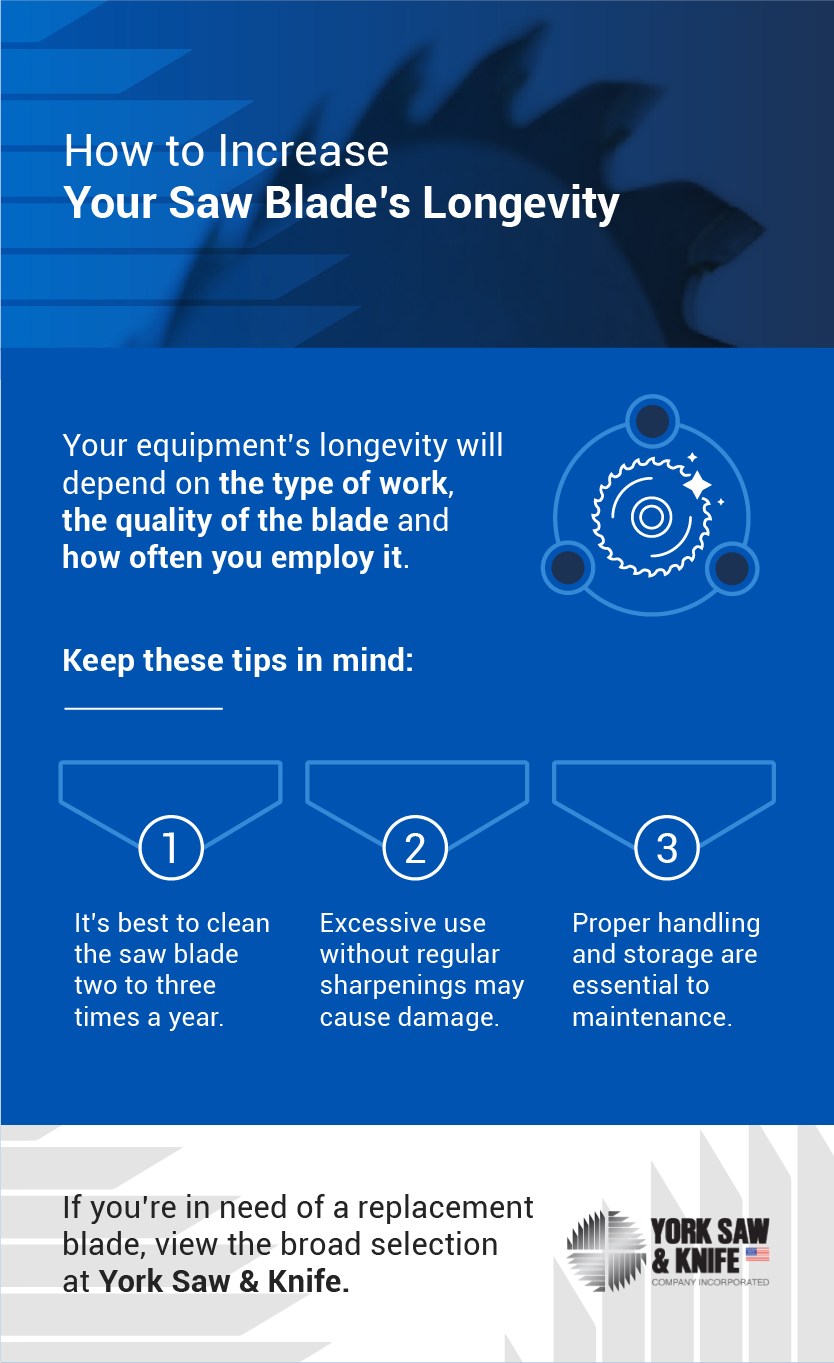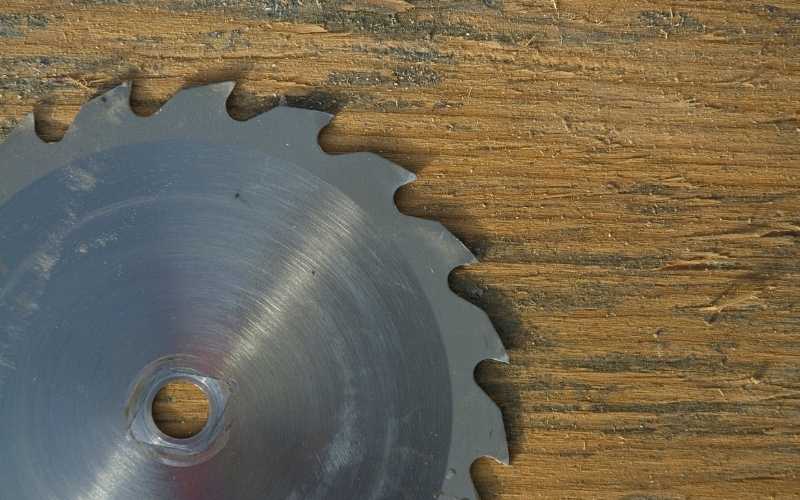When it comes to using a circular saw, you want to ensure that your cuts are clean, accurate, and safe. That’s why knowing when to replace your circular saw blade is crucial. So, how often should you replace your circular saw blade? Let’s find out!
A sharp circular saw blade is essential for achieving precise cuts and preventing accidents. Over time, the blade can dull or become damaged, affecting the quality of your cuts and posing a safety risk. But don’t worry, we’re here to guide you on when it’s time to swap out your old blade for a new one.
In this article, we’ll explore the factors that determine when to replace your circular saw blade and provide you with some expert tips to keep your cuts clean and your projects on point. Let’s dive in!
- Examine the blade for signs of wear, such as dull or chipped teeth.
- Check for excessive vibration or burning during use.
- Monitor the quality of the cuts – if they become rough or uneven, it may be time to replace the blade.
- Consider the type and frequency of your projects – heavier or more frequent use may require more frequent blade replacements.
- Lastly, follow the manufacturer’s recommendations for blade replacement intervals.
Remember, keeping a sharp and well-maintained circular saw blade is essential for safety and achieving clean, precise cuts.

How Often Should You Replace Your Circular Saw Blade?
When it comes to using a circular saw, the blade is one of the most critical components. Over time, however, the blade can wear down and become less effective, affecting the quality of your cuts. But how often should you replace your circular saw blade? In this article, we will delve into the factors that determine when it’s time to replace your blade and provide some helpful tips to keep your saw in optimal condition.
Factors that Affect the Lifespan of Your Circular Saw Blade
1. Frequency of Use:
The frequency with which you use your circular saw plays a significant role in how often you should replace the blade. If you use it daily for heavy-duty tasks, you may need to replace the blade more frequently. However, if you only use your saw occasionally for light projects, the blade may last longer.
2. Material Being Cut:
The type of material you frequently cut can also impact the lifespan of your circular saw blade. If you primarily cut hardwoods or abrasive materials like metal, the blade will deteriorate faster compared to cutting softwoods or plastic.
3. Maintenance:
Proper maintenance and care can prolong the life of your circular saw blade. Regularly cleaning the blade, keeping it free of debris, and ensuring it is properly tensioned and aligned will help prevent premature wear and damage.
Signs It’s Time to Replace Your Circular Saw Blade
1. Dull or Chipped Teeth:
A clear indication that your circular saw blade needs replacing is if the teeth are dull or chipped. Dull teeth can result in splintering or burning of the wood, whereas chipped teeth can significantly affect the quality of your cuts.
2. Excessive Vibration or Noise:
If you notice an increase in vibration or unusual noises, such as grinding or screeching, while using your circular saw, it could be a sign that the blade is worn out. As the blade becomes dull, it can cause the saw to vibrate excessively, which not only affects the smoothness of your cuts but can also be dangerous.
3. Burn Marks on the Wood:
When a circular saw blade becomes dull, it may start to burn the wood during the cutting process. Burn marks are a clear indication that the blade is no longer cutting efficiently and needs to be replaced.
How to Extend the Lifespan of Your Circular Saw Blade
1. Choose the Right Blade:
Selecting the appropriate blade for the material you’re cutting can help extend its lifespan. Different blades are designed for specific purposes such as cutting wood, metal, or masonry. Using the correct blade will reduce wear and tear on the teeth and ensure cleaner cuts.
2. Frequently Clean the Blade:
Regularly cleaning your circular saw blade after use is crucial for maintaining its performance. Use a stiff brush or a blade cleaning solution to remove built-up debris, resin, and pitch. This will prevent the accumulation of gunk, reducing friction and prolonging the life of the blade.
3. Avoid Overloading the Blade:
Putting excessive force on the blade or forcing it through thick or dense materials can cause it to wear out faster. Allow the saw to do the cutting work and avoid pushing or twisting the blade excessively. This will help prevent overheating and premature blade failure.
When to Replace the Blade vs. Sharpening
While sharpening your circular saw blade can extend its lifespan, there comes a point when it’s more practical to replace it altogether:
1. If the blade is severely damaged or heavily worn, sharpening may not restore its original cutting performance.
2. If you have already sharpened the blade multiple times, it may be time to replace it, as continuously sharpening can alter the blade’s original geometry and compromise its effectiveness.
3. If the cost of sharpening is comparable to the cost of a new blade, it’s often more economical to invest in a new one.
Conclusion
Replacing your circular saw blade regularly is essential for maintaining the cutting performance and safety of your saw. Factors such as frequency of use, material being cut, and proper maintenance all contribute to the lifespan of the blade. By monitoring the signs of wear and implementing good maintenance practices, you can ensure your circular saw blade is always in optimal condition.
Key Takeaways: How Often Should You Replace a Circular Saw Blade?
- Regularly check the condition of your circular saw blade every few months.
- Replace the blade if you notice excessive wear, missing or damaged teeth, or if it becomes dull.
- Consider replacing the blade if it starts producing rough cuts or burns the wood.
- Have spare blades on hand for quick replacement during projects.
- Follow the manufacturer’s guidelines for blade replacement intervals based on usage and materials.
Frequently Asked Questions
When it comes to operating a circular saw, one important maintenance task is regularly replacing the saw blade. Here are some common questions about how often to replace a circular saw blade.
1. How do I know when it’s time to replace my circular saw blade?
There are a few signs that indicate it’s time to replace your circular saw blade. First, if you notice that the blade is dull and no longer cutting smoothly through the material, it’s a good indication that a replacement is needed. Additionally, if you see chips or missing teeth on the blade or notice excessive vibration or wobbling while cutting, these are all signs that the blade should be replaced. As a general guideline, it’s recommended to replace the saw blade every 50 to 100 hours of use, depending on the type of material you’re cutting and the intensity of the work.
Keep in mind, however, that these are general guidelines and your specific usage and cutting conditions may require more frequent blade changes. It’s always better to err on the side of caution and replace the blade sooner if you notice any of the aforementioned signs.
2. Can I sharpen a dull circular saw blade instead of replacing it?
Yes, in some cases, you can sharpen a dull circular saw blade instead of replacing it. However, there are a few factors to consider. First, not all circular saw blades are designed to be sharpened, so check the manufacturer’s instructions or markings on the blade to see if it’s suitable for sharpening.
Even if your blade is sharpenable, keep in mind that sharpening a blade requires specific skills, tools, and expertise. It’s not a task recommended for beginners, as improper sharpening can potentially damage the blade or affect its performance. Therefore, if you’re not confident in your ability to sharpen the blade properly, it’s best to replace it with a new one.
3. Are there any preventative measures I can take to prolong the life of my circular saw blade?
Absolutely! There are a few simple preventative measures you can take to extend the life of your circular saw blade. First, always make sure the blade is properly aligned and tightened to reduce wear and tear. Second, use the appropriate blade for the type of material you’re cutting, as using the wrong blade can cause unnecessary damage. Third, avoid forcing the blade through the material by applying excessive pressure, as this can overheat and prematurely wear out the blade. Lastly, regularly clean the blade and remove any accumulated debris or resin that may affect its performance.
By following these preventive measures, you can maximize the lifespan of your circular saw blade and ensure optimal cutting efficiency.
4. Can I use a circular saw blade past its recommended lifespan?
While it may be tempting to continue using a circular saw blade beyond its recommended lifespan to save money, it’s generally not advisable. As the blade wears down, its cutting performance and safety can be compromised. A dull or worn blade can cause rough cuts, splintering, and even kickbacks, which can be dangerous. Additionally, as the blade wears, it can put more strain on the motor, potentially leading to overheating or damage. To ensure the best cutting results and maintain safety, it’s recommended to replace the blade once it reaches the end of its recommended lifespan.
5. Are all circular saw blades the same, or do I need to choose a specific one for my saw?
No, all circular saw blades are not the same. There are various types of blades available, designed for different materials and cutting applications. Some blades are specifically designed for cutting wood, while others are tailored for cutting metal, plastic, or other materials. It’s important to choose the correct blade for the specific material you’ll be cutting to ensure optimal performance and avoid damage to the blade or the material. When purchasing a new blade, check its specifications and ensure it’s compatible with your circular saw.
By selecting the right blade for your saw and the material you’re working with, you’ll achieve cleaner cuts, enhance efficiency, and prolong the life of both the blade and your saw.

How to know when to replace your saw blade : QuickTip #6
Summary
When it comes to replacing the circular saw blade, there are a few factors to consider. Firstly, it’s important to inspect the blade regularly for signs of wear and tear. If the blade is dull, chipped, or bent, it’s time for a replacement. Additionally, the frequency of blade replacement depends on how often you use the saw and the materials you cut. Roughly speaking, a good guideline is to replace the blade about every 50-100 hours of use. Remember, a sharp and well-maintained blade not only ensures better cutting performance but also improves safety during your woodworking projects. So, keep an eye on your circular saw blade and replace it when necessary to keep your saw running smoothly.
